It’s a popular claim: jobs are changing so quickly in the technology sector that it’s hard for job seekers to keep up, leading to what some employers complain is a skills shortage. But what does the job market really look like for tech job seekers and employers? Our research finds that while the tech labor market does face some unique challenges, the rhetoric is more dire than the reality.
Using Indeed data on job seeker resumes and job postings from 2014 through 2018, we looked at three different aspects of the tech labor market:
- How fast are the types of tech jobs changing?
- Do tech employers see fewer job seekers than other employers?
- Do today’s tech job seekers match what employers are looking for?
Key findings:
- We found that the types of tech job postings have actually been changing more slowly than the types of job postings in the economy overall.
- Even though tech has fewer job seekers per job opening than other sectors, it has actually become comparatively easier for employers to find tech talent over the past few years.
- Tech job seekers are better matched to current job opportunities in the field than are job seekers in the overall economy. That suggests a smaller “skills gap” within tech than in the economy overall.
The tech job market is not changing as fast as the rest of the economy
One surprising fact about the tech job market is that it is actually changing more slowly than the overall labor market. The image of a sector that is relentlessly charging forward, with new types of jobs appearing every day, is not reflected in the data. Overall job postings on Indeed were 25% different in 2018 than 2014, but tech job postings were only 18% different.
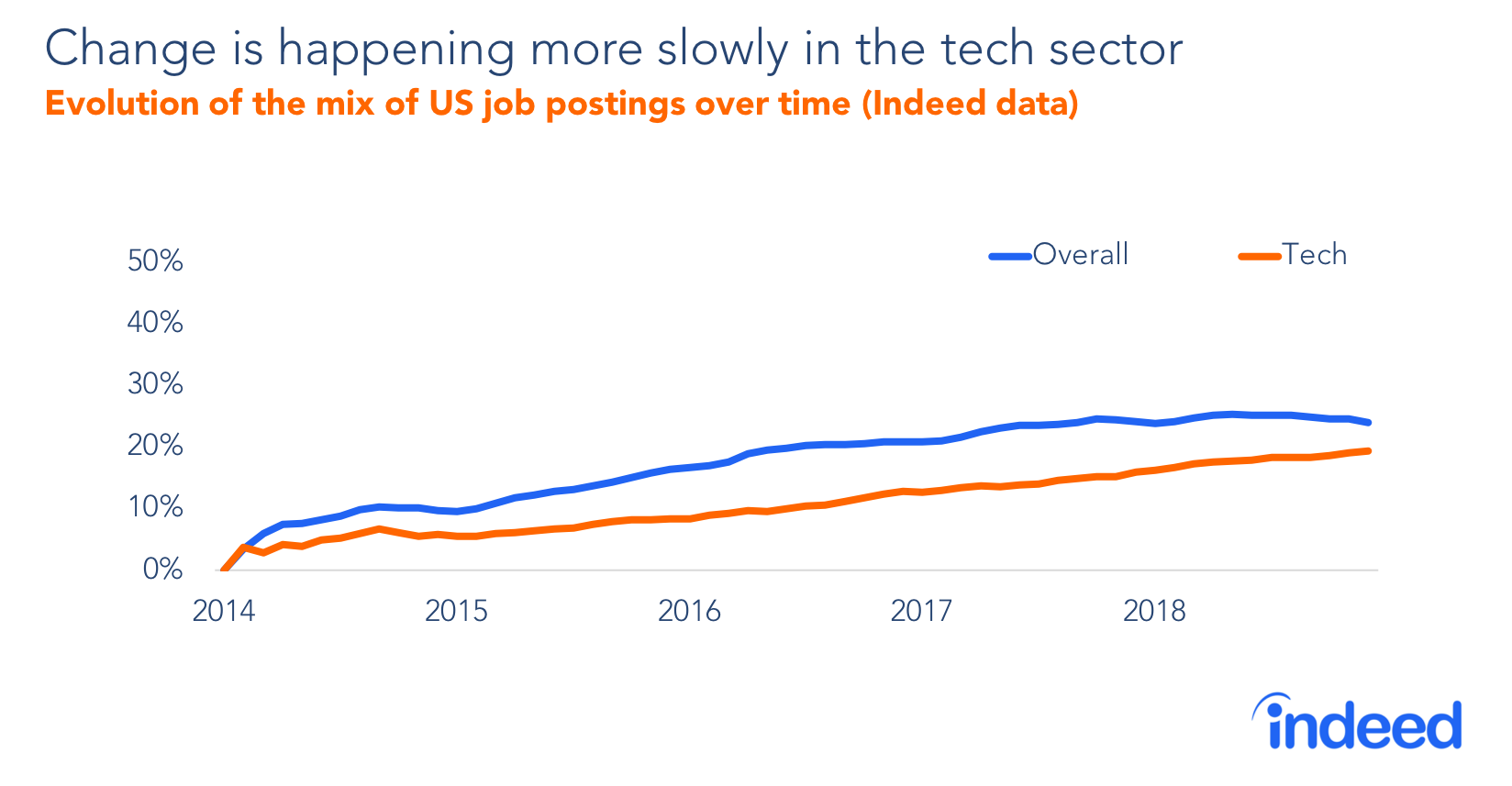
Even a sector that changes more slowly than others sees certain jobs become more prominent, while others fade away. In tech, demand for full stack developers and software engineers has climbed over the past four years, while demand for .net and java developers has declined, according to Indeed data.
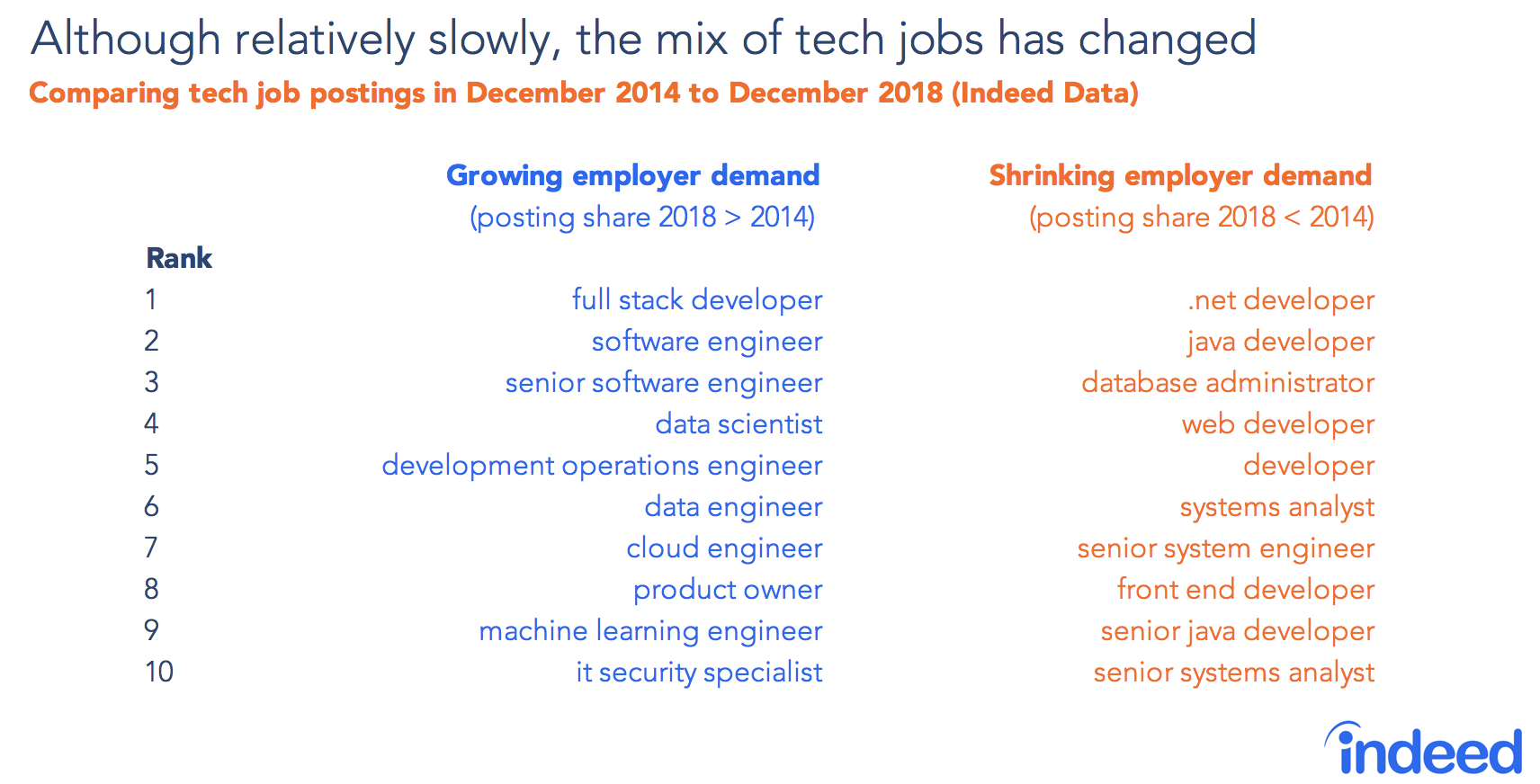
Tech is tighter than the overall economy, but it’s getting relatively easier to find talent
To be sure, tech has fewer job seekers relative to job opportunities compared to the economy overall. But even here, things are not as dramatic as sometimes reported. In 2018, it appeared to be relatively easier to find tech workers than in 2014. The tech skill training industry has expanded and there is more emphasis on preparing workers quickly. With more and faster training, it makes sense that tech employers are better able to find workers who have the skills they need.
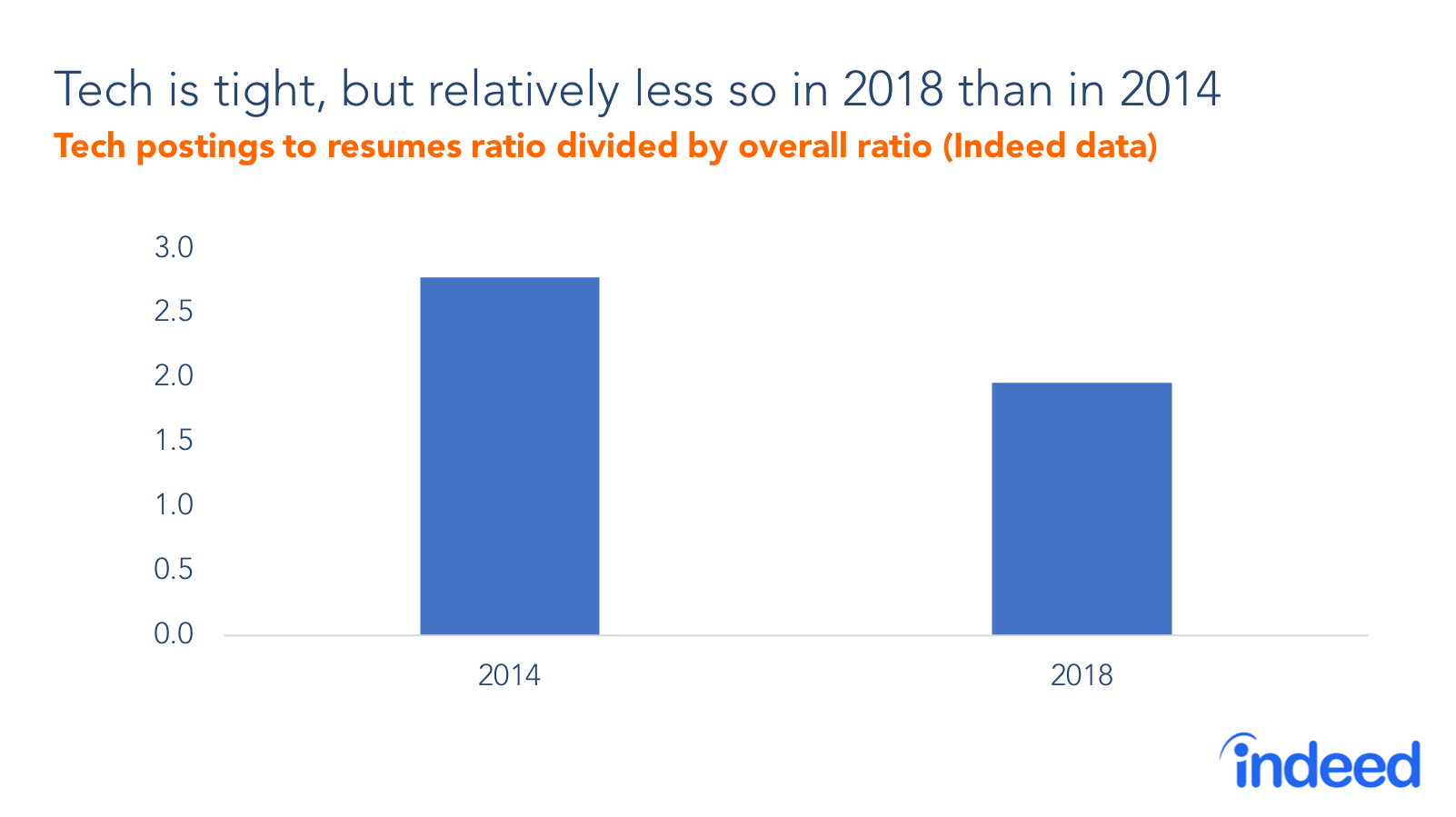
Although tech has a smaller pool of candidates per job opening than this ratio in the broader economy, the sector is attracting relatively more job seekers today than it was a few years ago. What’s more, tech job seekers are better matched to opportunities in the field than workers in the economy overall.
Mismatch between tech job seekers and available jobs is smaller than in economy overall
The word mismatch describes how well job seekers in a sector are matched to the jobs available in that sector. To quantify mismatch, we looked at resumes to compare job titles of job seekers from their current or most recent employment with the titles of Indeed job postings. (See methodology below).
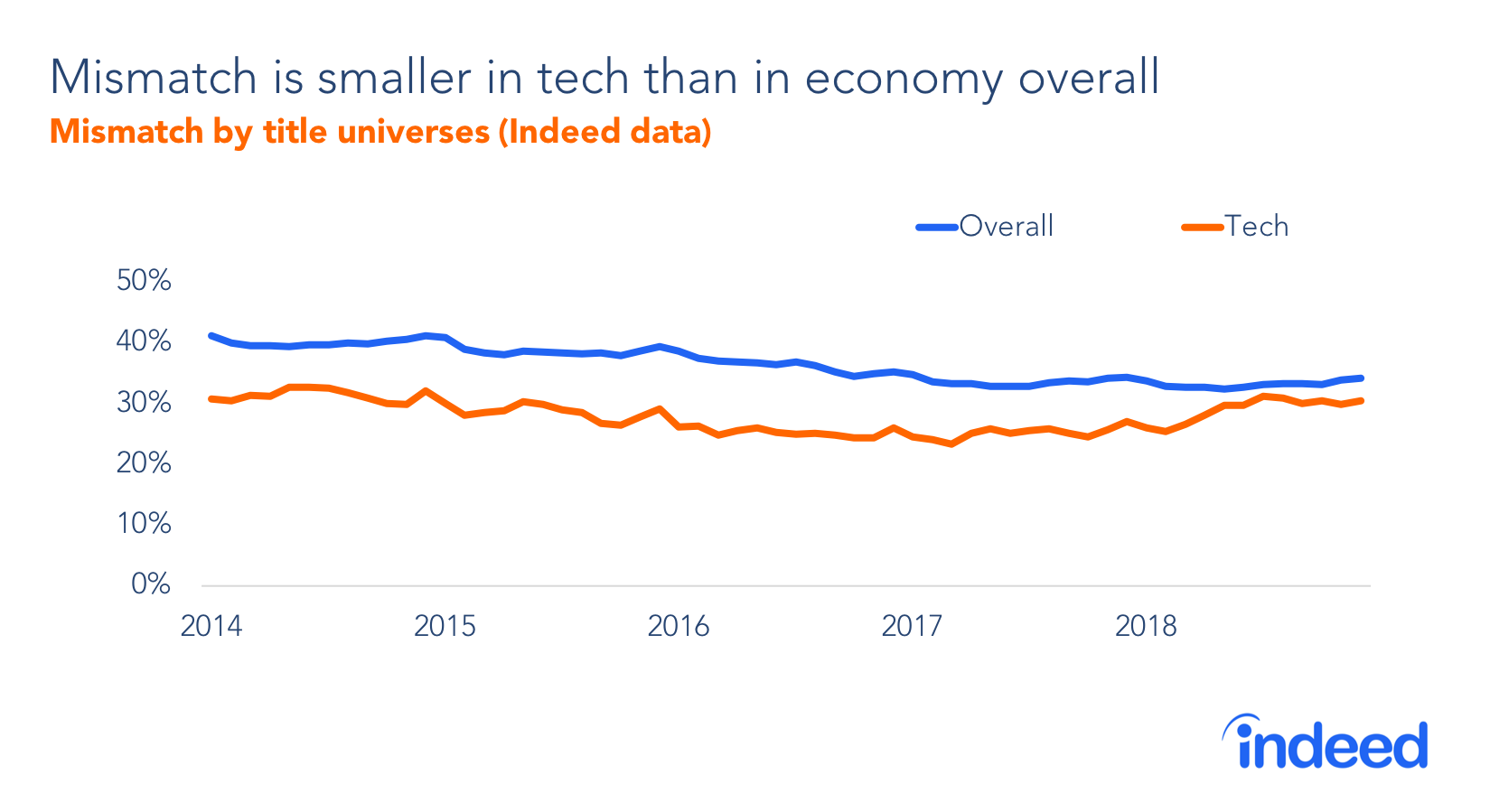
Mismatch has remained remarkably stable and is actually smaller in tech than in the labor market overall, meaning that tech job seekers are better suited for the jobs in that sector than are workers looking for jobs in other sectors. Lower mismatch suggests a smaller “skills gap” within tech than in the economy overall. Although the mismatch between job seekers and employers has increased in tech over the past year, it remains below the mismatch level for the overall economy.
Of course, within the tech sector, it’s easier to find workers for some roles than for others. In particular, tech struggles to find software engineers and architects, system engineers, data engineers, specialized developers, and data scientists. At the same time though, it’s a buyer’s market for many less specialized tech jobs, such as technical support, help desk analyst, and IT technician.
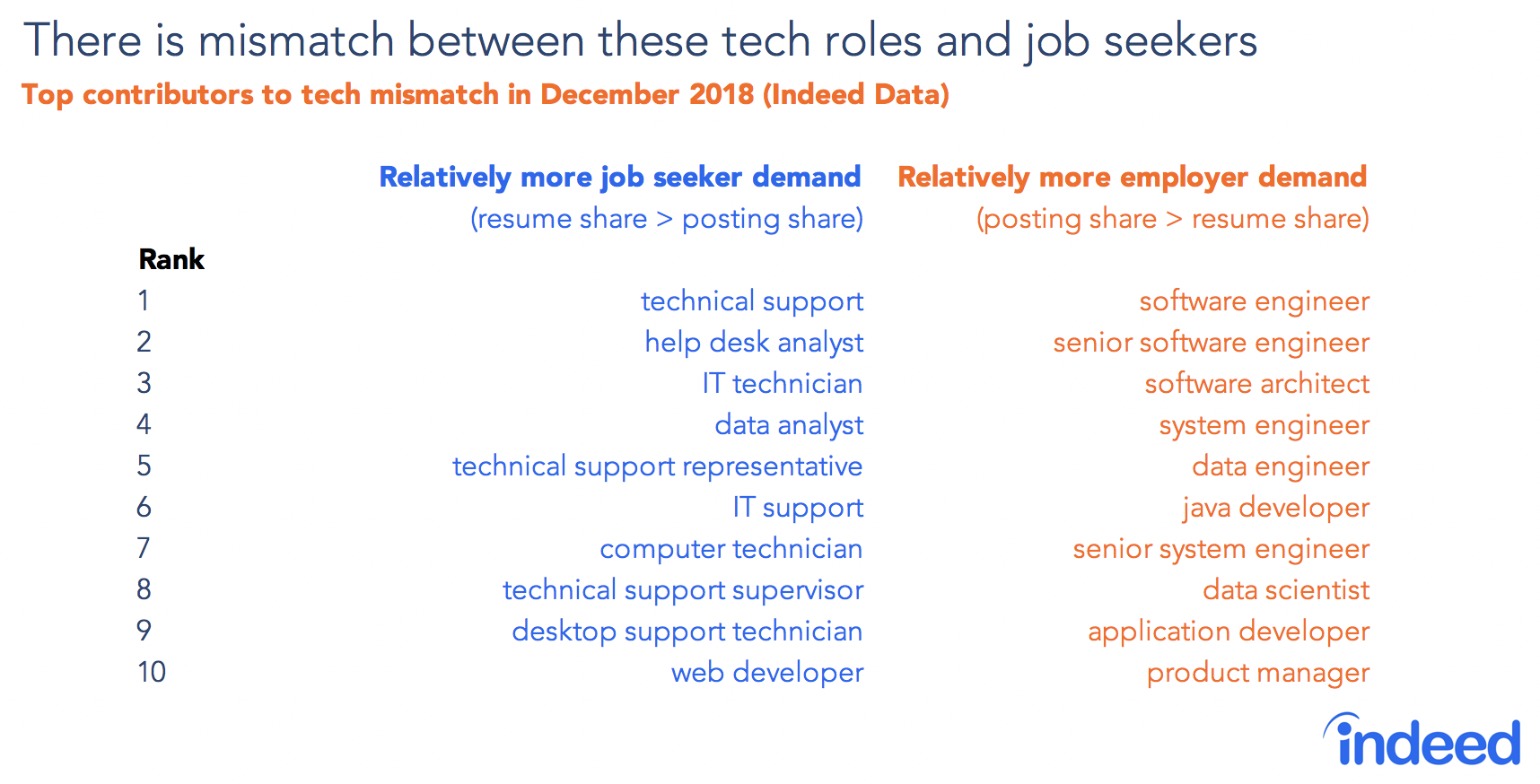
Although tech companies see fewer of the workers they need than employers in other sectors, tech is attracting relatively more job seekers today than it was a few years ago. What’s more, tech job seekers are better matched to available opportunities than are job seekers in the overall economy.
Methodology
Our analysis focuses on aggregated and anonymized data on US job openings and resumes posted on Indeed between January 2014 and December 2018. The data is organized as monthly counts of job postings and resumes mapped to one of 6060 normalized titles. Employers use tens of thousands of job title variations to describe roles, so we focus on “normalized” job titles which group together slight variations in titles. For example, the normalized title “technical support” groups titles such as “technical support analyst,” “technical support associate,” and “tech support.” We did not include resumes or job postings when the job title did not map to a normalized title. The tech sector is defined as a subset of the normalized titles based on 522 normalized titles that can clearly be classified as tech. Both mismatch and jobs mix change are measured using a standard dissimilarity index. For further details, see our previous post on mismatch from September of 2018 and the associated methodology materials.






